The Tranquil Beauty of South Putuo Temple: A Hidden Gem in China
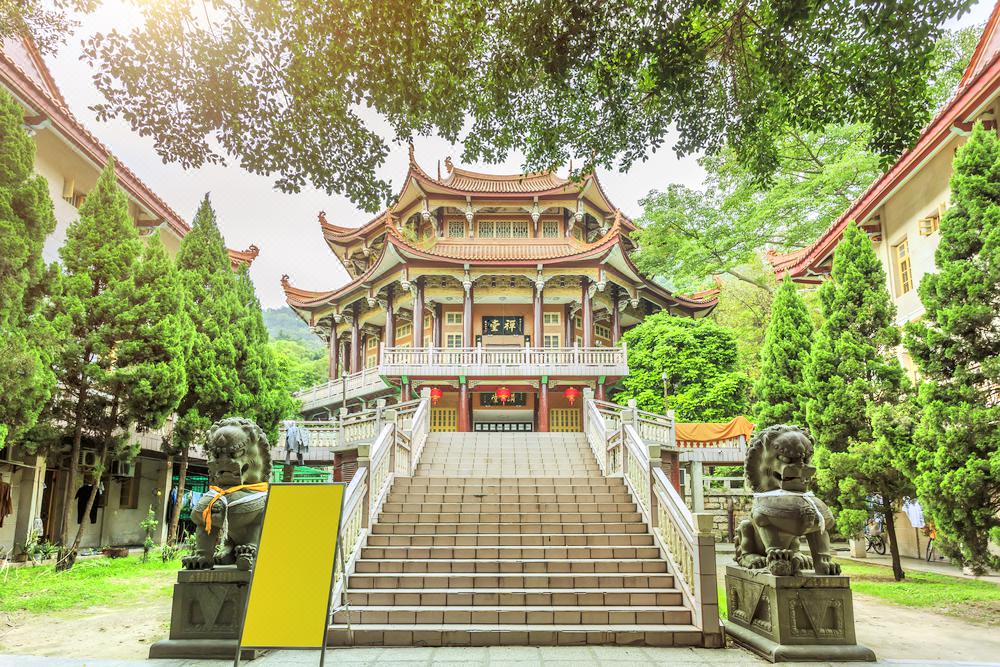
An Essential Guide to Visiting South Putuo Temple
Nestled on the picturesque island of Xiamen in Fujian Province, South Putuo Temple is a serene sanctuary that beckons travelers with its rich history and spiritual significance. Known as Nanputuo Temple, this revered Buddhist site has stood the test of time for over a millennium, captivating visitors with its stunning architecture and tranquil surroundings. As you wander through its lush gardens and intricate halls, you’ll find yourself enveloped in a profound sense of peace, with the gentle sound of waves lapping against the shore serving as the perfect backdrop.
The temple is not only a place of worship but also a vibrant cultural hub, attracting pilgrims and tourists alike who come to seek blessings for health and prosperity. With its breathtaking views of the azure sea and the majestic Wulao Peak towering in the background, South Putuo Temple offers an ideal blend of natural beauty and spiritual reflection. Whether you’re a devoted follower of Buddhism or simply an inquisitive traveler, this temple invites you to pause, reflect, and immerse yourself in the harmonious atmosphere that has inspired countless souls throughout the centuries.
Join us as we explore the intricate details and highlights of South Putuo Temple, ensuring your visit is not just memorable but also deeply enriching.
In This Guide
- An Essential Guide to Visiting South Putuo Temple
- The Rich History and Legends of South Putuo Temple
- Main Highlights: What You Absolutely Can’t Miss
- Planning Your Visit: A Practical Guide
- Tickets: Prices, Booking, and Tips
- How to Get There: A Complete Transportation Guide
- Local Cuisine and Accommodation Nearby
- Frequently Asked Questions
- Final Thoughts on Your Trip
The Rich History and Legends of South Putuo Temple
Nestled in the picturesque landscape of Xiamen, South Putuo Temple, or Nanputuo Temple, is not only a revered Buddhist site but also a treasure trove of history and legends that span over a millennium. Founded during the late Tang Dynasty, the temple was originally named Sizhou Temple. Its origins are steeped in the rich tapestry of Chinese history, serving as a spiritual hub for both local devotees and international pilgrims.
The temple’s name changed in the late 17th century during the Qing Dynasty when the famed general Shi Lang, after recovering Taiwan, decided to honor the goddess Guanyin by constructing the Great Mercy Hall. This monumental act not only transformed the temple into a place of worship dedicated to Guanyin but also aligned its name with the sacred Putuo Mountain in Zhejiang province, which is known as the Bodhimandala of Guanyin. This connection established South Putuo Temple as a significant point of pilgrimage and reverence for followers of Buddhism.
Over the centuries, South Putuo Temple has evolved into a center for Buddhist exchanges, particularly since the 1920s. It has opened its doors to countless visitors, becoming a national key Buddhist temple in the Han areas. The temple is renowned for its architectural elegance, featuring intricate designs and a harmonious blend of nature and spirituality. The lush gardens and tranquil environment provide a serene backdrop for reflection and prayer, drawing both tourists and locals who seek blessings for health and prosperity.
Legends surrounding South Putuo Temple are as compelling as its history. One popular tale recounts how the temple was once home to a mystical monk who had the ability to communicate with Guanyin. It is said that he would spend hours in meditation, and the locals believed his prayers could bring rain during droughts, making him a beloved figure in the community. This legend highlights the temple’s role not just as a place of worship, but as a beacon of hope and divine intervention in the lives of the local populace.
Today, visitors to South Putuo Temple can admire its stunning architecture, which includes the majestic Daxiong Hall, a centerpiece built in 1926, showcasing traditional Southern Fujian craftsmanship. The temple’s main hall, Dabei Hall, dedicated to the Thousand-Hand Kwan-yin, stands as a testament to the deep-rooted beliefs of the Southern Fujian people. The Depository of Buddhist Sutras, built in 1936, houses priceless texts and relics, including the famous Lotus Sutra written in blood, which serve as a reminder of the temple’s enduring legacy.
As you wander through the serene grounds of South Putuo Temple, you can feel the weight of its history and the whispers of legends that have shaped its identity over the centuries. This temple is not merely a spiritual sanctuary; it is a living monument to the faith, culture, and stories of the people who have cherished it for generations. Whether you are seeking spiritual enlightenment or simply wish to immerse yourself in its historical grandeur, South Putuo Temple offers an unforgettable experience that resonates with the heart of Xiamen.
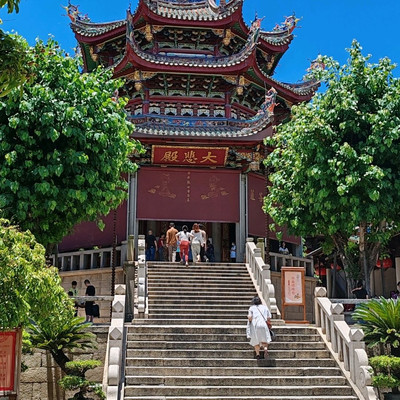
South Putuo Temple.
Main Highlights: What You Absolutely Can’t Miss
Nestled at the foot of Wulao Peak in Xiamen, South Putuo Temple is not just a spiritual haven but also a treasure trove of architectural beauty and cultural significance. Here’s a guide to the main highlights of this magnificent temple that you absolutely can’t miss during your visit.
The Majestic Tianwang Hall
As you approach South Putuo Temple, your journey begins at Tianwang Hall, which is located at the forefront of the temple’s central axis. Here, you will be greeted by the serene presence of Maitreya Buddha, flanked by the Four Devarajas, whose fierce expressions signify protection. The grandeur of Tianwang Hall sets the tone for the spiritual experience that awaits you.
The Splendid Daxiong Hall
Continuing your exploration, don’t miss Daxiong Hall, the heart of the temple complex. Built in 1926, this architectural marvel showcases traditional Southern Fujian craftsmanship, featuring exquisite wooden structures, intricately carved beams, and vibrant stone pillars. Daxiong Hall is not only a stunning visual feast but also a hub for Buddhist activities, where monks conduct daily rituals and ceremonies.
The Enchanting Dabei Hall
Ascend the nearly 30 stone steps to reach Dabei Hall, dedicated to the Thousand-Hand Kwan-yin. This octagonal hall, built during the Qing Dynasty, is renowned for its delicate and intricate design, resembling a spider web. The spiritual energy here is palpable, drawing in many locals who come to burn incense and seek blessings from Kwan-yin, the embodiment of compassion.
The Scholarly Depository of Buddhist Sutras
For those interested in Buddhist texts and cultural relics, the Depository of Buddhist Sutras is a must-see. Constructed in 1936, this two-story building houses precious manuscripts, including the Lotus Sutra written in blood from the Ming Dynasty. The first floor serves as a dhammasala for teachings, while the second floor preserves invaluable texts and artifacts, offering a glimpse into the rich history of Buddhism in the region.
The Serene Natural Surroundings
Beyond the architecture, South Putuo Temple is enveloped in lush greenery and faces the azure sea, creating a tranquil atmosphere perfect for reflection and relaxation. Take a leisurely stroll around the temple grounds, where you can find the charming Free Life Pond, home to various aquatic creatures, and a lotus pool that enhances the serene ambiance.
Climb Wulao Peak
If time permits, consider climbing Wulao Peak, located just behind the temple. This hike offers stunning views of the temple and the surrounding landscape, making it a perfect way to conclude your visit. The journey up the peak adds an adventurous touch to your spiritual exploration, allowing you to connect with nature and find inner peace.
Vegetarian Delights
Finally, don’t overlook the opportunity to savor delicious vegetarian cuisine available at the temple. The meals are not only healthy but also reflect the Buddhist principles of compassion and respect for all living beings. Enjoying a meal here adds another layer to your cultural experience.
With its rich history, stunning architecture, and serene environment, South Putuo Temple is a highlight of any visit to Xiamen. Make sure to set aside a few hours to fully immerse yourself in the spiritual and cultural wealth this remarkable destination has to offer.
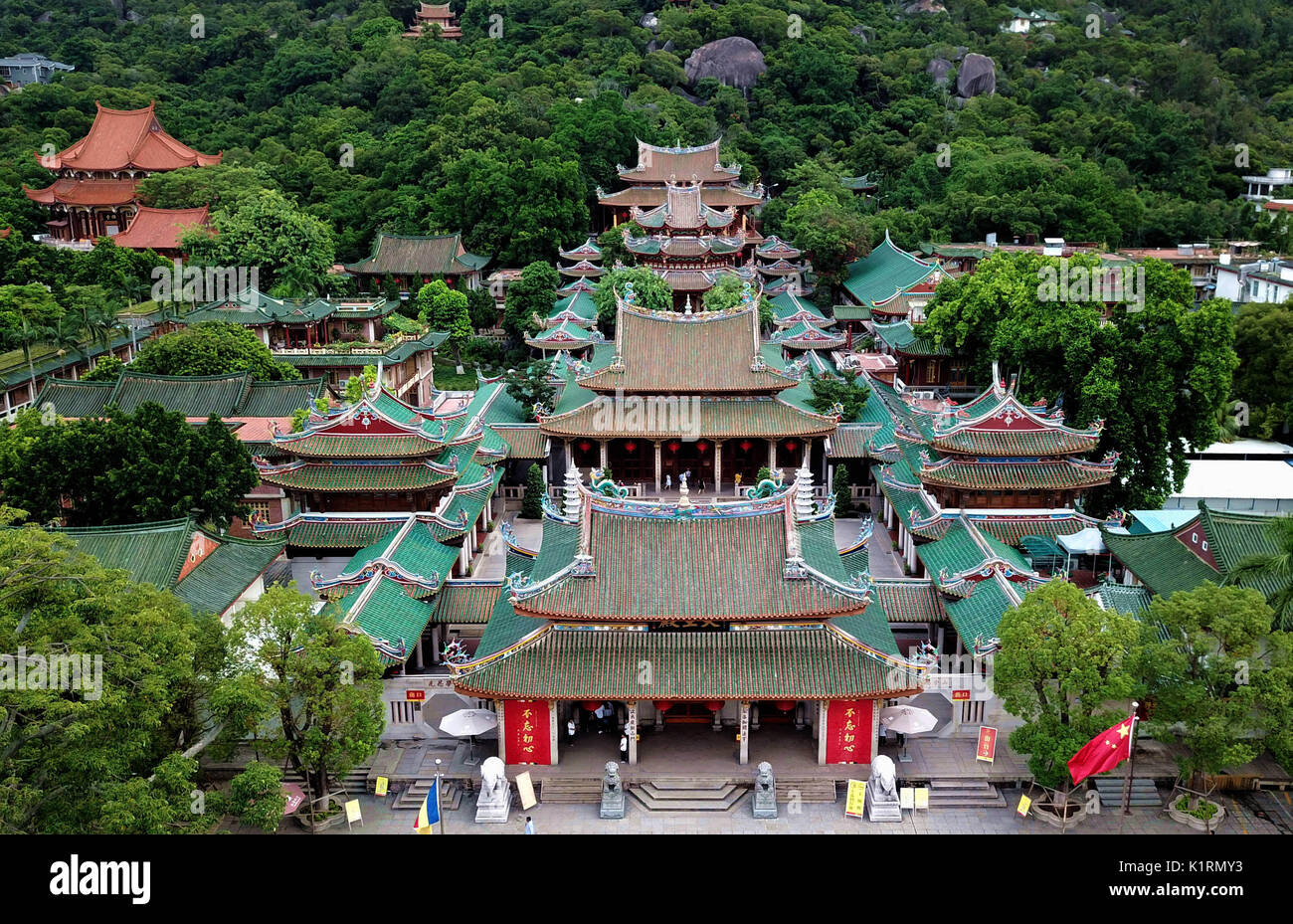
South Putuo Temple.
Planning Your Visit: A Practical Guide
Visiting South Putuo Temple in Xiamen is a unique experience that combines spiritual reflection, cultural immersion, and natural beauty. Here’s a practical guide to help you make the most of your visit to this historical site.
Getting There
Address:
No. 515 Siming South Road, Siming District, Xiamen 361005, China
Transportation:
– Public Transport: Utilize local buses or the Xiamen Metro to reach the temple. The closest metro station is Xiamen University Station, from which you can take a short taxi ride or walk to the temple.
– Taxi: Taxis are readily available throughout Xiamen. Show the driver the address in Chinese to ensure a smooth journey.
Best Time to Visit
Seasons:
South Putuo Temple can be visited year-round. However, spring (March to May) and autumn (September to November) offer the most pleasant weather, making your visit more enjoyable.
Recommended Visiting Time:
Plan to spend between 1 to 3 hours at the temple. This will allow you to explore the architecture, participate in rituals, and enjoy the serene surroundings.
Opening Hours
- Outer Gate: 3:00 AM to 8:00 PM
- Inner Gate: 3:00 AM to 6:00 PM
Entry Fee
Tickets:
Entry to South Putuo Temple is free, making it accessible for all visitors. Donations are welcome if you wish to support the temple.
What to Expect
Architecture and Highlights:
– Marvel at the intricate designs of the Tianwang Hall, where Maitreya Buddha is worshipped.
– Visit the Daxiong Hall, the heart of the temple, known for its stunning wooden architecture and rich carvings.
– Explore the Dabei Hall, dedicated to the Thousand-Hand Kwan-yin, which is revered by the local community.
– Don’t miss the Depository of Buddhist Sutras, where you can learn about the temple’s rich history and view rare artifacts.
Nature and Peace:
The temple is nestled against Wulao Peak with beautiful views of the azure sea. Take time to stroll through the lush gardens and peaceful ponds, which provide a tranquil setting for reflection.
Local Cuisine
While at the temple, be sure to try the delicious vegetarian food available on-site. The temple’s dining area serves a variety of traditional dishes that are both nutritious and flavorful, allowing you to experience local Buddhist culinary practices.
Additional Activities
Hiking:
If time permits, consider hiking up Wulao Peak, which is located just behind the temple. The trail offers stunning views of Xiamen and the surrounding coastline.
Shopping:
Nearby, you can find shops that sell Buddhist artifacts, souvenirs, and local snacks. This is a great opportunity to bring a piece of your experience home.
Tips for a Smooth Visit
- Dress Code: As a religious site, dress modestly. Comfortable shoes are recommended, especially if you plan to hike.
- Respect Local Customs: Be mindful of the temple’s sacredness. Follow the rules regarding photography and noise levels.
- Stay Hydrated: Bring water, especially if you visit during the warmer months.
Conclusion
South Putuo Temple is not just a place of worship but a cultural landmark that embodies the rich heritage of Xiamen. With its stunning architecture, serene environment, and rich spiritual offerings, a visit to this temple promises to be a memorable part of your journey in China. Enjoy your visit!
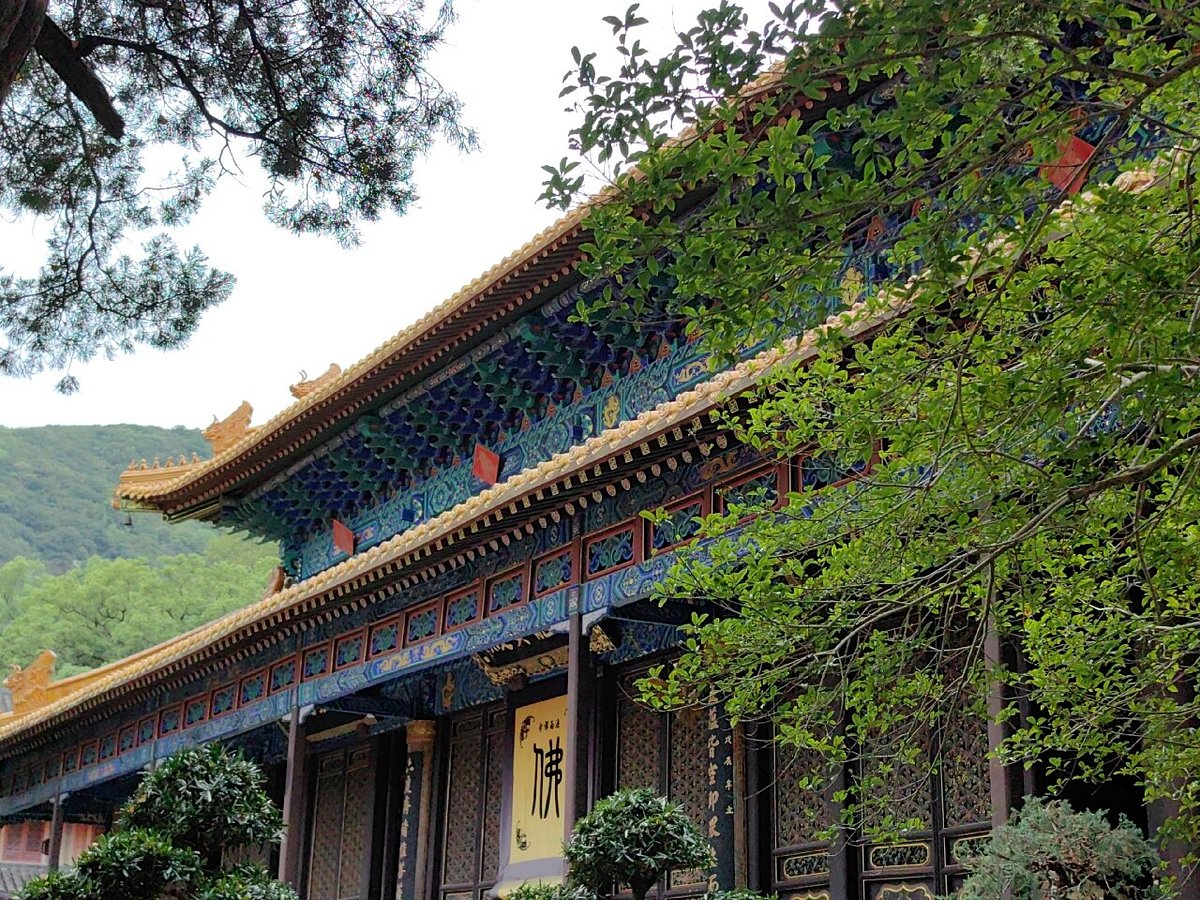
South Putuo Temple.
Tickets: Prices, Booking, and Tips
Visiting South Putuo Temple (南普陀寺) is a unique experience that doesn’t come with a price tag. Admission to this serene Buddhist sanctuary is completely free, making it an accessible destination for travelers looking to explore the spiritual heart of Xiamen without breaking the bank.
Opening Hours
The temple welcomes visitors daily, with the outer gates open from 3:00 AM to 8:00 PM and the inner gates from 3:00 AM to 6:00 PM. These extended hours allow early risers to catch the tranquil morning light and those looking to unwind in the evening to enjoy the peaceful atmosphere as the sun sets.
Booking Tips
- No Reservations Needed: Since entry is free, there is no need to book tickets in advance. Simply arrive during the opening hours to explore the temple and its breathtaking surroundings.
- Best Time to Visit: For a quieter experience, consider visiting early in the morning or later in the afternoon. Weekdays typically see fewer visitors than weekends, allowing for a more intimate experience.
- Guided Tours: If you prefer a deeper understanding of the temple’s history and significance, consider joining a guided tour. Many local tour companies offer packages that include transportation and a knowledgeable guide to enrich your visit.
Getting There
South Putuo Temple is conveniently located near Xiamen University and is easily reachable by public transport, including buses and taxis. Walking from Xiamen University can also provide a pleasant stroll through the area.
Additional Tips
- Dress Respectfully: As this is a place of worship, it’s advisable to dress modestly. Comfortable shoes are also recommended as you may want to explore the temple grounds and nearby Wulao Peak.
- Enjoy Vegetarian Cuisine: Don’t miss the chance to sample the delicious vegetarian food available within the temple grounds. It’s a delightful way to immerse yourself in the local culture.
- Photography Etiquette: While photography is generally allowed, be respectful of the worshippers and the sacred atmosphere. Always ask permission before photographing individuals.
Whether you seek spiritual reflection, a cultural experience, or simply a beautiful place to relax, South Putuo Temple offers a welcoming environment for all. Enjoy your visit!
How to Get There: A Complete Transportation Guide
Visiting the South Putuo Temple in Xiamen is an enriching experience, and getting there is relatively straightforward, thanks to the city’s well-connected transportation options. Whether you’re arriving from within China or traveling internationally, here’s a comprehensive guide to help you reach this serene Buddhist site.
Arriving in Xiamen
By Air:
Xiamen Gaoqi International Airport (XMN) serves as the primary gateway to the city. It is well connected to major cities in China and various international destinations. Upon arrival, you can choose from several transportation options to get to South Putuo Temple.
- Airport Shuttle Bus: Take the airport shuttle that leads to Xiamen Railway Station. From there, you can catch a local bus or taxi to the temple.
- Taxi: Taxis are readily available outside the airport. A taxi ride to South Putuo Temple takes approximately 20-30 minutes, depending on traffic, and costs around 40-60 RMB.
By Train:
Xiamen has a modern railway station that connects it to several major cities. If you are coming from nearby cities such as Fuzhou or Quanzhou, taking a train can be a comfortable and efficient option.
- From Xiamen Railway Station: Once you arrive, you can take a taxi directly to the temple (around 15 minutes) or use public buses. Buses No. 17 and 45 can take you closer to your destination.
By Bus:
Long-distance buses from various cities in Fujian Province and beyond frequently arrive at Xiamen’s Long-distance Bus Station. Buses are a budget-friendly option and offer scenic views along the way.
- From the Bus Station: Similar to the train station, you can opt for a taxi or use local buses to reach South Putuo Temple.
Local Transportation in Xiamen
Once you’re in Xiamen, navigating the city is easy with several public transportation options:
-
Public Buses: Xiamen’s public bus system is extensive and affordable. You can find routes that lead to South Putuo Temple. Look for buses that stop at “Nanputuo” or “Xiamen University.”
-
Taxis and Ride-Sharing: Taxis are plentiful and relatively inexpensive compared to many international cities. Ride-sharing apps like Didi also operate in Xiamen, providing a convenient alternative for those familiar with mobile apps.
-
Bicycles and E-Scooters: For those who enjoy a more active approach, Xiamen has bike-sharing programs and electric scooters available for rent. Riding along the scenic coastal paths can add a delightful dimension to your visit.
Final Steps to the Temple
Upon reaching the vicinity of South Putuo Temple, it’s just a short walk from the nearest bus stop or taxi drop-off point. Follow the signs that guide you towards the temple entrance, and prepare to immerse yourself in the tranquil atmosphere and stunning architecture.
Tips for Visiting
- Opening Hours: The outer gate is open from 3:00 AM to 8:00 PM, while the inner gate closes at 6:00 PM. Plan your visit accordingly to make the most of your time.
- Entry Fee: Visiting the temple is free, but consider making a donation to support its upkeep.
- Dress Code: As a place of worship, it’s advisable to dress modestly and respectfully.
With this guide in hand, your journey to the enchanting South Putuo Temple will be smooth and enjoyable. Embrace the serenity of this sacred site and create lasting memories during your visit to Xiamen!
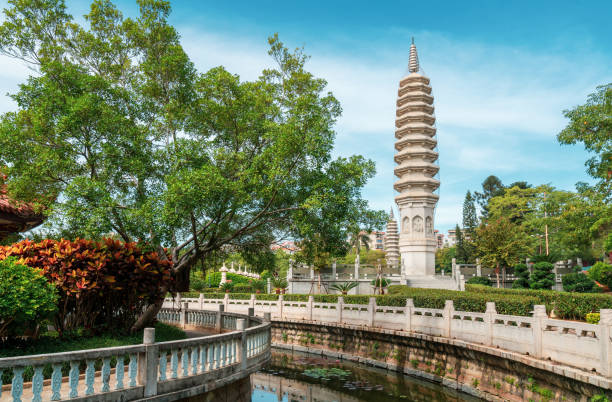
South Putuo Temple.
Local Cuisine and Accommodation Nearby
When visiting the serene South Putuo Temple, you’ll want to indulge not only in its spiritual ambiance but also in the local culinary delights and comfortable accommodations nearby. Xiamen is known for its vibrant food scene, particularly its fresh seafood and unique Fujianese dishes, making it an excellent destination for both food enthusiasts and casual diners.
Local Cuisine
-
Vegetarian Delights at the Temple
Inside the temple, you can experience a unique offering—delicious vegetarian meals prepared with fresh ingredients. These dishes are not only flavorful but also reflect the temple’s Buddhist principles, making it a perfect way to nourish your body and soul after exploring the sacred site. -
Shacha Noodles (沙茶面)
Just a short walk from South Putuo Temple, you’ll find local eateries serving Shacha noodles, a specialty of Xiamen. This dish features noodles topped with a rich, savory sauce made from garlic, shallots, and peanuts, often accompanied by shrimp or pork. It’s a must-try for those looking to experience authentic local flavors. -
Seafood at Zeng Cuo An Village
A popular area near the temple, Zeng Cuo An is famous for its seafood stalls and restaurants. Here, you can enjoy fresh catches of the day, whether it’s grilled squid, steamed clams, or sweet and sour crab. The vibrant atmosphere and ocean views make dining here a delightful experience. -
Xiamen Peanut Soup (花生汤)
Don’t miss out on trying Xiamen’s signature dessert—peanut soup. This sweet and creamy dish is made from boiled peanuts and is often served warm. It’s the perfect way to end your meal on a comforting note.
Accommodation Nearby
-
Xiamen International Seaside Hotel
Located just a short distance from South Putuo Temple, this hotel offers stunning views of the sea and a comfortable stay with modern amenities. Guests can enjoy the hotel’s pool, spa, and on-site dining options while being conveniently close to the temple and other attractions. -
JW Marriott Hotel Xiamen
For those seeking luxury, the JW Marriott provides a lavish experience with spacious rooms, exquisite dining options, and a top-notch wellness center. Its location makes it easy to explore the temple and the surrounding scenic spots. -
Hanting Express Xiamen Siming South Road
If you’re looking for budget-friendly yet comfortable accommodation, this hotel offers clean and cozy rooms at an affordable price. It’s conveniently located, allowing easy access to South Putuo Temple and local eateries. -
Xiamen U-House Boutique Hotel
This charming boutique hotel features uniquely decorated rooms and a warm atmosphere. Its proximity to the temple and personalized service make it a great choice for travelers seeking a more intimate experience.
Conclusion
Whether you’re savoring the vegetarian dishes at South Putuo Temple, indulging in local seafood delights, or relaxing in one of the nearby accommodations, Xiamen promises a rich and fulfilling travel experience. Enjoy the harmony of culinary exploration and spiritual tranquility as you immerse yourself in the beauty of this coastal city.
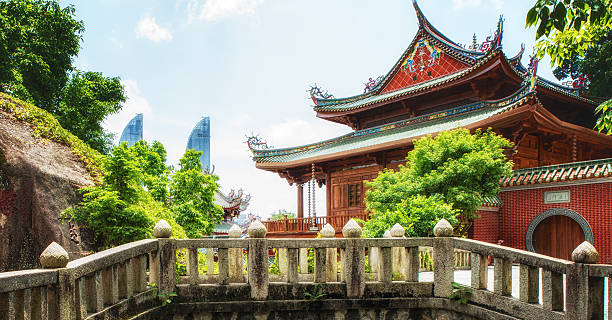
South Putuo Temple.
Frequently Asked Questions
Frequently Asked Questions about South Putuo Temple
-
What are the opening hours for South Putuo Temple?
The outer gate of South Putuo Temple is open from 3:00 AM to 8:00 PM, while the inner gate is accessible from 3:00 AM to 6:00 PM. Plan your visit accordingly to experience the temple at its best. -
Is there an admission fee to enter the temple?
Visiting South Putuo Temple is free of charge. Donations are welcomed, which help maintain the temple and support its activities. -
How long should I plan to spend at South Putuo Temple?
A visit typically takes between 1 to 3 hours. This allows ample time to explore the various halls, enjoy the serene surroundings, and perhaps participate in some local rituals. -
What is the best time of year to visit South Putuo Temple?
South Putuo Temple can be visited year-round. However, the best seasons are spring and autumn when the weather is mild and pleasant, enhancing your experience. -
Are there any specific customs or etiquette I should follow while visiting?
Yes, as a religious site, it’s important to be respectful. Dress modestly, refrain from loud conversations, and follow any local customs, such as bowing before entering halls or lighting incense. -
Can I find vegetarian food at South Putuo Temple?
Absolutely! The temple offers delicious vegetarian meals, making it a perfect spot for both spiritual and culinary experiences. Vegetarian food is a significant part of Buddhist culture. -
Is it possible to climb Wulao Peak from the temple?
Yes, climbing Wulao Peak is a popular activity among visitors. The trail is accessible from the temple and offers stunning views of the surrounding area. Make sure to wear comfortable shoes! -
How do I get to South Putuo Temple from Xiamen city center?
South Putuo Temple is conveniently located near Xiamen University. You can take a taxi, public bus, or even walk if you’re nearby. Public transport options are frequent, making it easy to reach the temple.
Final Thoughts on Your Trip
As your journey comes to a close, the South Putuo Temple stands as a serene reminder of the rich spiritual and cultural tapestry woven throughout Xiamen. This ancient site, with its harmonious blend of nature and architecture, invites you to pause and reflect on the beauty of life and the wisdom of centuries past. Whether you found solace in the tranquil halls, marveled at the intricate carvings, or indulged in the delicious vegetarian cuisine, each moment spent here is a step towards inner peace.
As you prepare to depart, consider carrying a piece of this tranquility with you—whether it’s the calming scent of incense, the gentle sound of temple bells, or the uplifting spirit of the local community. South Putuo Temple is not just a destination; it’s an experience that resonates long after you’ve left its sacred grounds. Embrace the lessons learned, the connections made, and the memories created during your visit. Until your next adventure, may the essence of South Putuo Temple accompany you, guiding your path with wisdom and peace.